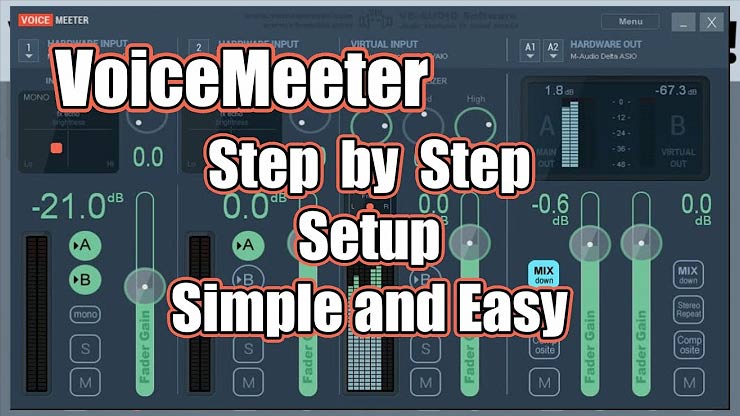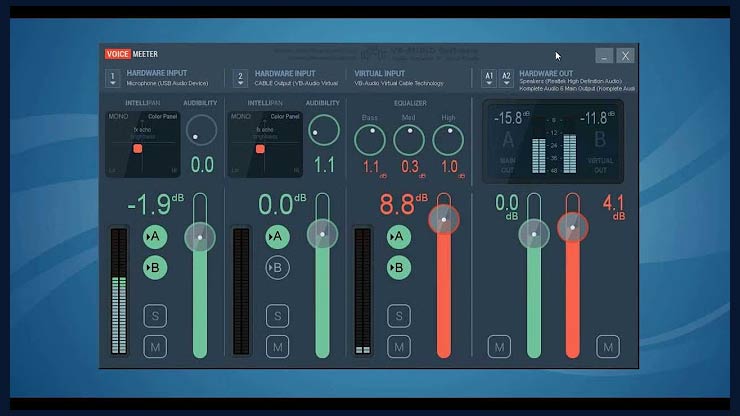-
PeterFour
- Posts: 4
- Joined: Fri Dec 21, 2018 10:31 pm
Failed to Open Main Output Device A1
Hi there,
I recently reinstalled windows on a new PC but whenever I try to select my speakers for A1 I get this error :
Code: Select all
Failed to Open Main Output Device (A1)
Device not ready or used by another process.I had a look already in that thread : viewtopic.php?t=442 and tried uninstalling, rebooting and reinstalling but no luck.
I also tried unticking the Exclusive Access on the speakers but not luck either
If someone knows anything I would be very grateful
-
PeterFour
- Posts: 4
- Joined: Fri Dec 21, 2018 10:31 pm
Re: Failed to Open Main Output Device A1
Post
by PeterFour » Sun Nov 17, 2019 2:39 pm
Ah well as always, the solution is found right after I post it.
So what I had to do in the end :
Turns out when I installed the drivers/utilities for my motherboard (Asus Crosshair VIII Hero), I installed something called Sonic Studio, which I think does some audio manipulation/routing. I removed it and tada it works.
I did have some crackly sound but ticking the exclusive access and that fixed everything.
Hopefully that will help someone like me in the future
Failed to Open Main Output Device (A1)
For a couple weeks now I’m having issues with Voicemeeter Potato. Everything was fine before but all of the sudden I keep getting the following error message:
Failed to Open Main Output Device (A1)
Device not ready or used by another process.
Select A1 Output Device first !
Keep default settings (default buffer Size).
Device configuration might be 32, 44.1, 48, 88.2 or 96kHz only
pAudioClient-> Initialize return error -2004287478
I’ve been trying to find a solution but there is not a lot I can find about this problem and everytime I did find something the possible fixes didn’t change anything.
I’ve managed to find two temporary fixes that work until I restart my PC. I can either go into services and restart the «Windows Audio» service or i can go into the sound settings and change the frequency of the device I’m using as A1 (but even though that frequency then works, after a reboot I have to change it to something else again).
I can at least use Voicemeeter with these temporary fixes but as you can imagine it is very annoying and i would hope there is a way to permanently fix this.
If anyone has any ideas on how to fix it or have even had the same problem and managed to fix it please let me know and thank you in advance.
I’m happy to share any info that might be needed that i forgot to mention
PLAY YOUR SOUNDS ON SPEAKERS AND HEADPHONES.
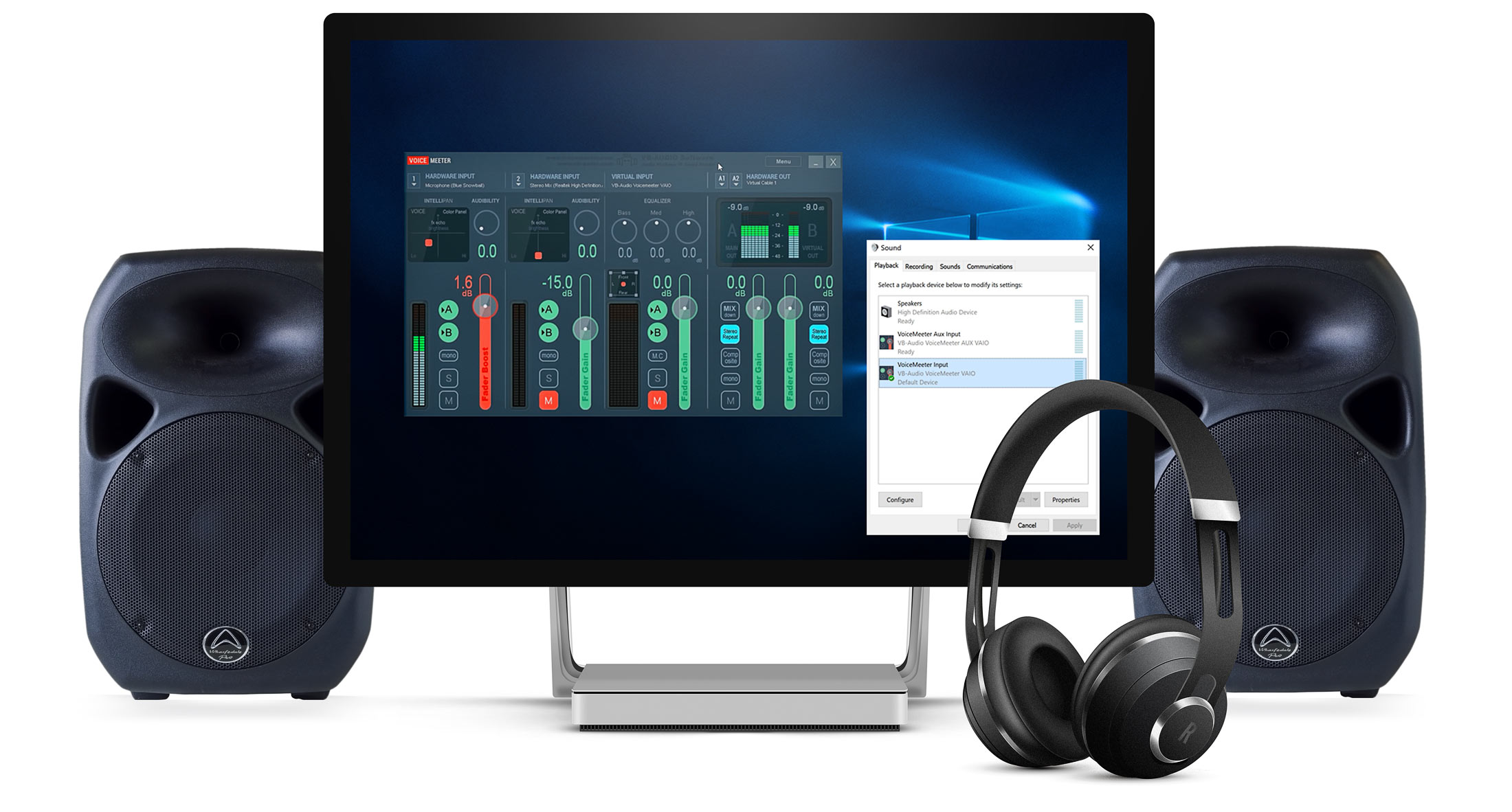
VOICEMEETER is an incredible powerful virtual audio mixer, intended to replace the standard Windows Mixer. It simply needs two steps:
- Set VOICEMEETER as the default Windows input device and
- set your speakers as main output device.
VOICEMEETER to the rescue.
VOICEMEETER can mix audio sources from different audio devices with any audio application. By replacing the standard Windows mixer …
… ALL SOURCES can be mixed, regardless of their driver format: Microphones, Soundcards, Music, Movie Sound, a Skype call, Video game sound, Teamspeak, Internet Radio …
The mixes can be sent to Headphones plus Speakers (BUS A1/A2) and to software (BUS B). Mixes can even be streamed to mobile phones or other PCs.
VOICEMEETER replaces the Windows mixer.
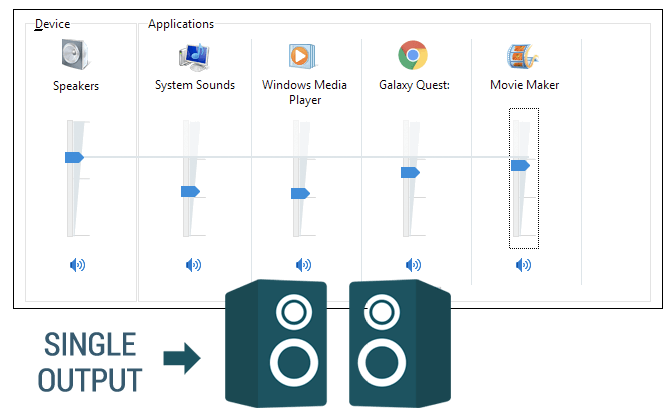
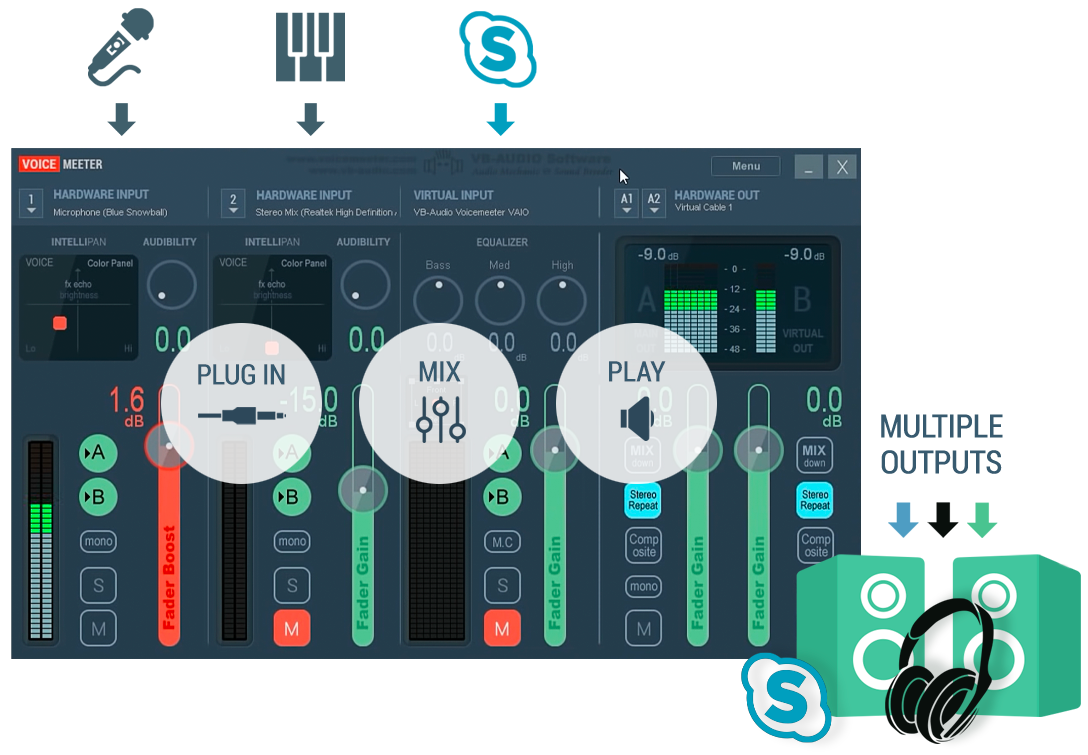
Out of the box Microsoft Windows cannot mix several audio device drivers and audio applications and provide sound effects.
Example: It is not possible to mix a headset plus an audio input with a Skype call and listen to the combined result. Usually it´s only possible, to use more than one device at a time in a software application (e. g. the Mic headset in Skype, Game Sound). Especially internet browsers don´t provide a audio device selection, they are limited to the default windows audio device.
VOICEMEETER comes to the rescue and manages all Windows audio in a smart way, by giving you a new and powerful mixer and audio managment system.
VOICEMEETER works as a Virtual Soundcard, which mixes every source – seamlessly. It even streams Audio over the Network to other VBAN clients. Windows recognizes it as a multi-channel “hardware” device with 12 inputs and 12 outputs.
It supports all common audio formats: MME, Direct-X, KS, WaveRT, WASAPI and ASIO. This way all audio devices can be simply plugged into VOICEMEETER. With the universal driver support VOICEMEETER can even work as a bridge for different driver formats, combining audio hardware from different manufacturers and exchanging audio, e. g. Focusrite, RME, UAD, Soundblaster … you name it.
A TYPICAL VOICEMEETER SETUP:
2 x Hardware + 1 x Software
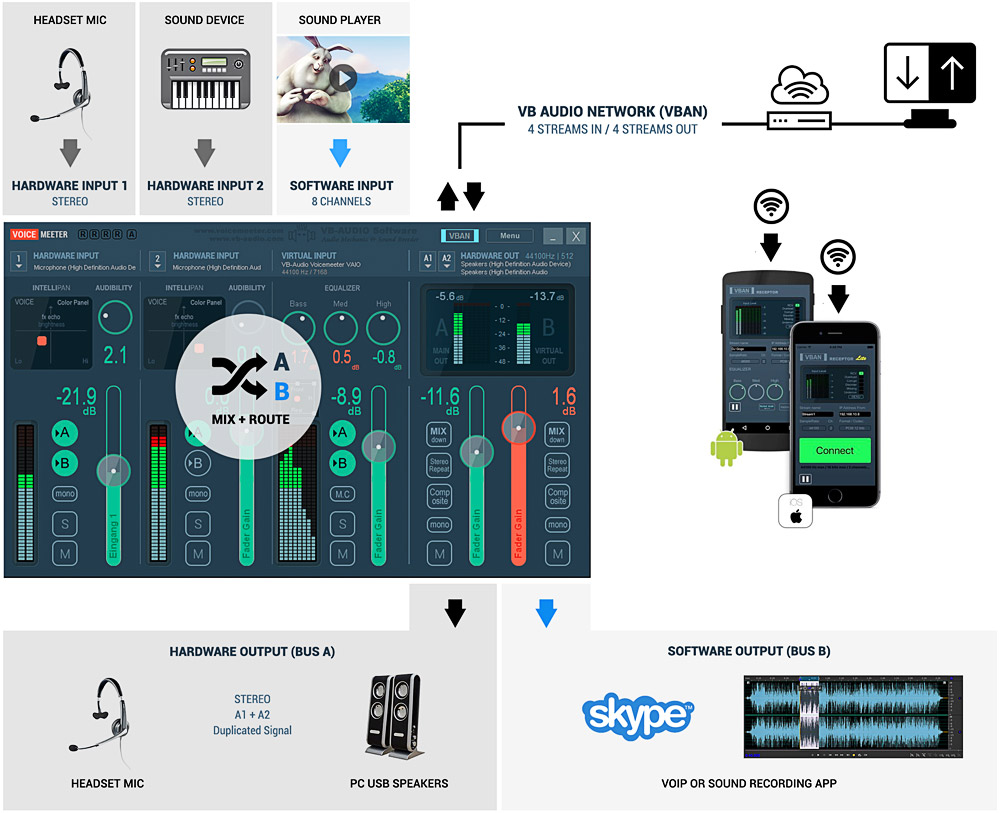
1
SET VOICEMEETER
AS YOUR DEFAULT OUTPUT DEVICE.
ALL SOUNDS WILL PASS THROUGH IT.
VOICEMEETER can be found in the Windows application menu after successful installation.
The Windows system audio device list now includes a virtual VOICEMEETER playback and recording device.
Open the Windows Sound Control Panel (see below) and select the Playback tab.
Set VB-Audio VoiceMeeter VAIO as your default Playback (= Output) audio device.
You can find the Windows Sound Control Panel:
Settings / Sound / Related Settings (Scroll down)
VOICEMEETER has to appear with the VOICEMEETER icon, otherwise there is a possible driver installation problem (usually caused by Windows 10 updates).
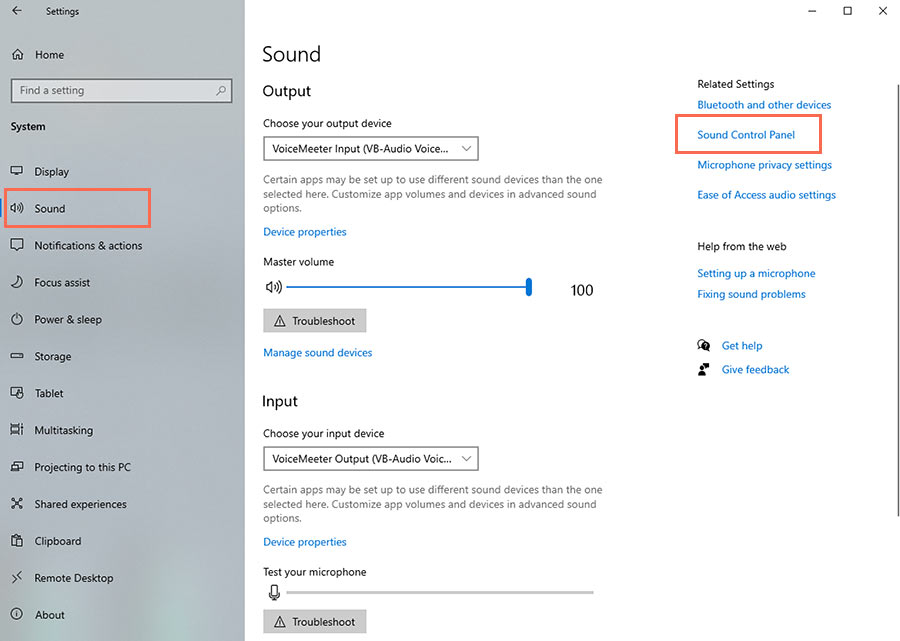
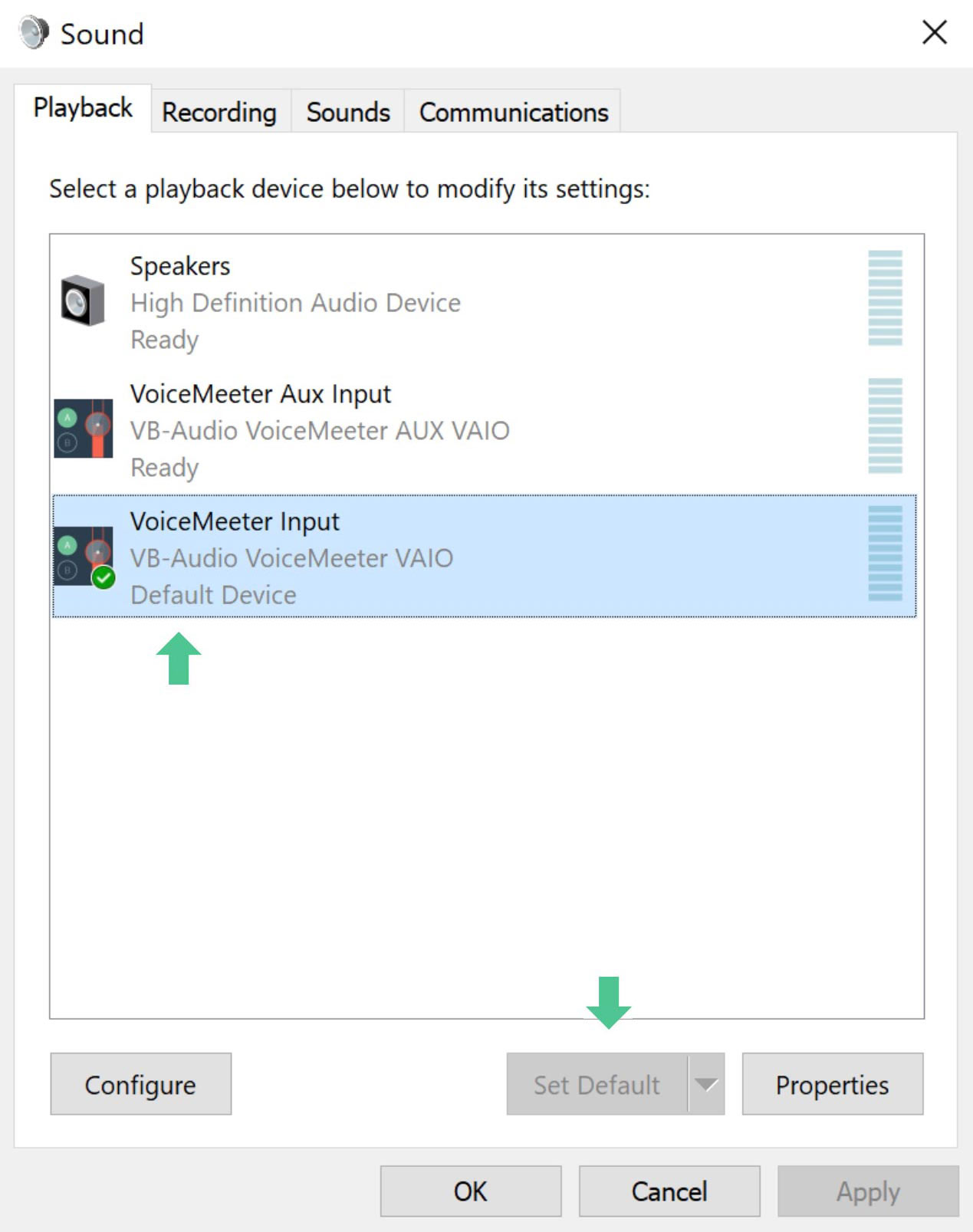
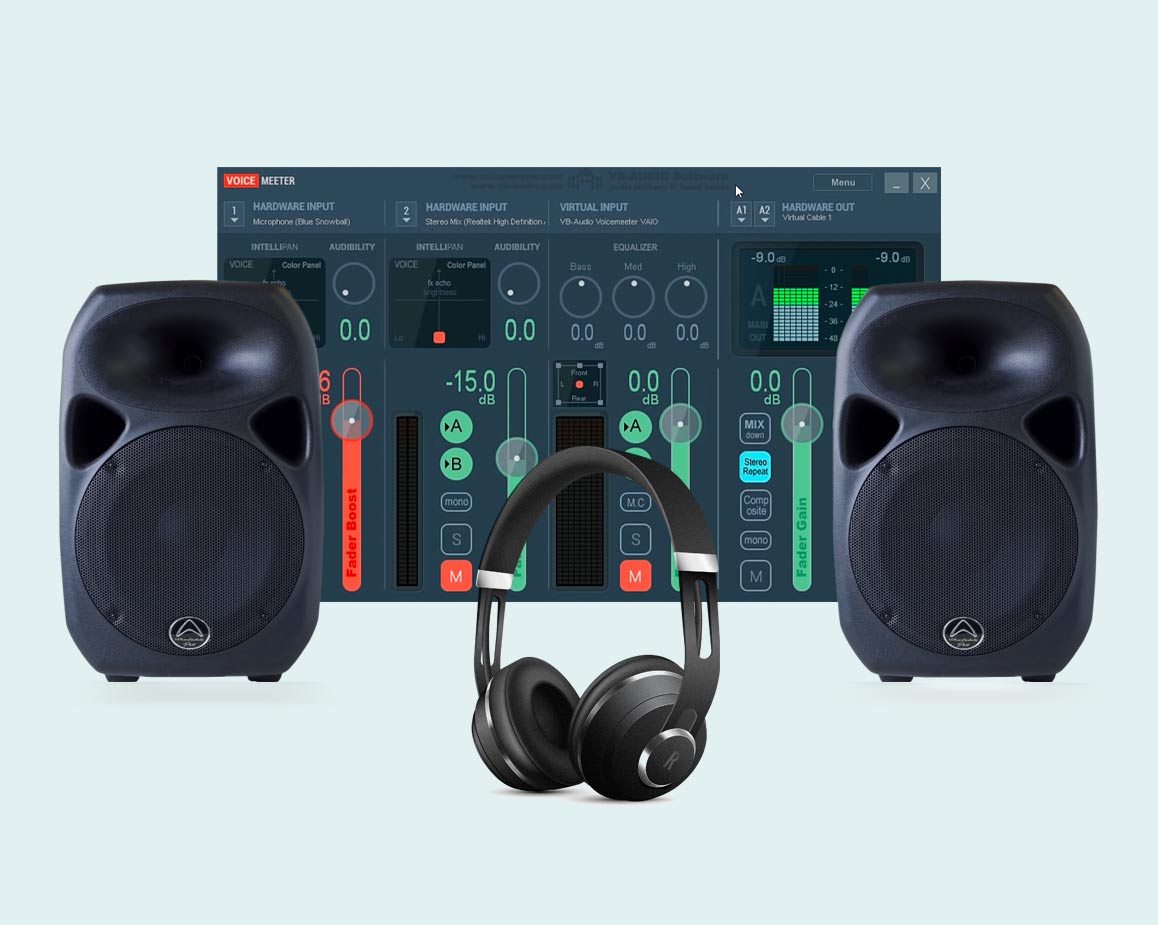
2
SELECT YOUR MAIN
OUTPUT DEVICE
TO PLAY ALL YOUR AUDIO ON SPEAKERS AND/OR HEADPHONES.

With STEP 1 all of your audio goes into VOICEMEETER. To play it to your speakers or headphones, simply select the main output device on BUS A1.
To play on another device at the same time, VOICEMEETER provides two hardware outputs on BUS A: A1 + A2.
Select another driver on A2. This way, you can use headphones parallel to your desktop speakers.
Every output device on your computer is represented by its driver name (e.g. USB Headset).
We recommend the selection of an ASIO or WDM device to get the best possible latency. These devices are used by default in exclusive mode, bypassing the Windows mixer and possibly its Volume Control.
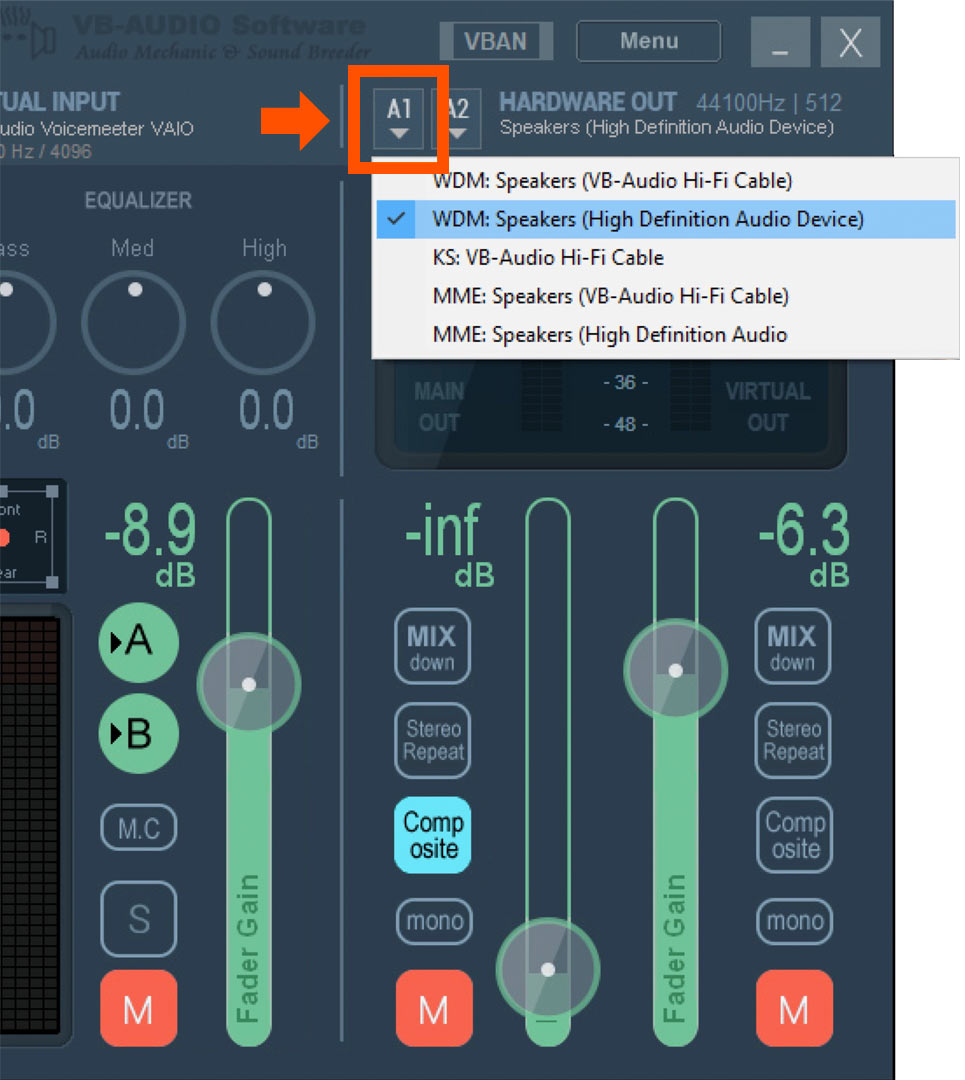
3
ITS DONE:
ALL AUDIO PASSES NOW
THROUGH VOICEMEETER.
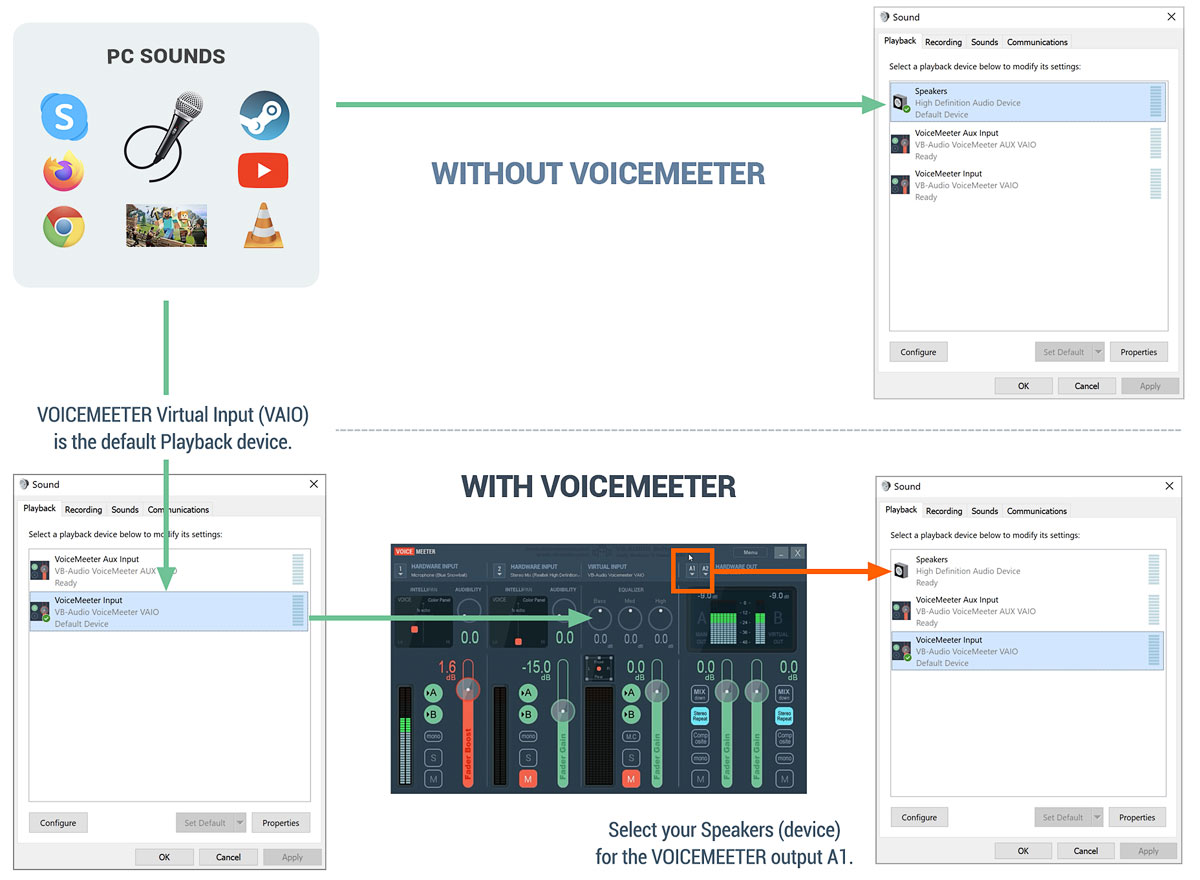
One more thing:
Open the Communications Tab in the Sound Control Panel and check: “Do nothing.”
Otherwise other Mic inputs – not used by the communications app – may not work correctly with VOICEMEETER.
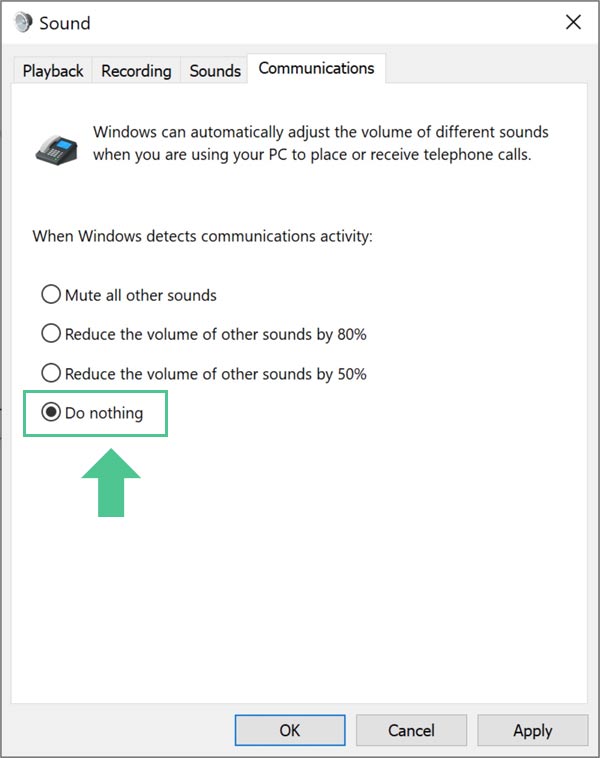
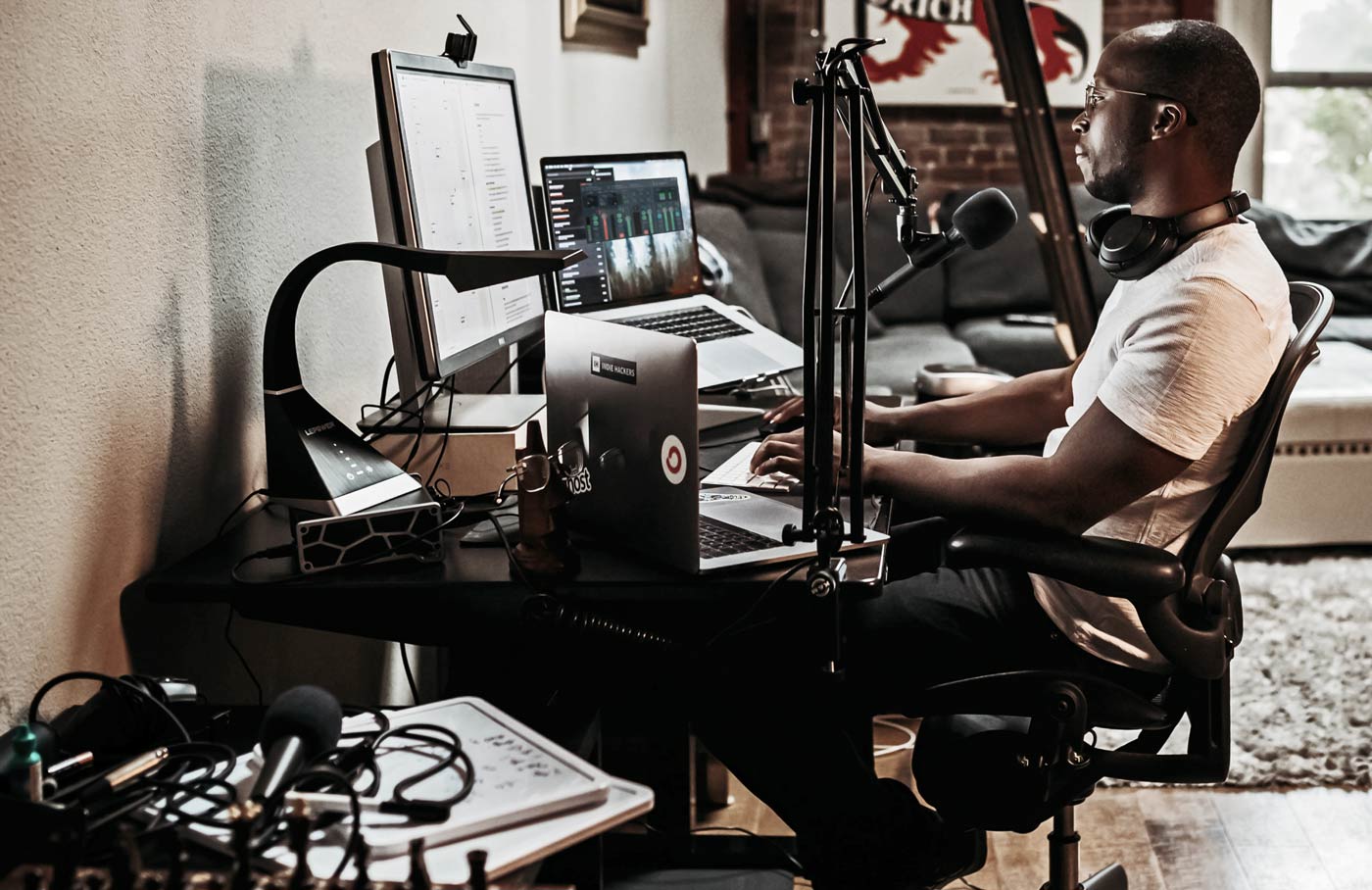
You are ready to go.
Mix your devices.
Control your volume.
Use sound effects.
Start your Podcast.
Need more help? Check out these videos:
How to install and startup Voicemeeter Standard, the Virtual Audio Mixer for Windows.
Audio: FR – Subtitle: EN-US
VOICEMEETER audio mixer overview
Download, Basics, Intellipan, Mixing browser audio with media audio.
You should upgrade or use an alternative browser.
-
#1
It reads «Failed to open main output device. Device Not Ready or used by another process. Select A1 Output Device First. Check Latency, too small buffer size might not be supported. pAudioClient — Initialize return error — 2147024895 (0x800700001)»
I have Voice Meeter setup so A1 is my headset and A2 is my speakers. A1 (My Headset) is connected through a FiiO E10K USB DAC which I got a month ago, and I also recently set up my At 2035 through a UMC22. On Voice Meeter the FiiO E10k is blinking red and in Windows sound manager it looks frozen in the middle of receiving audio (green bars on the right-hand side). My startup applications haven’t changed except for Elgato Stream Deck, and Private Internet Access.
The only workaround I have at the moment that works until I reset my Pc is for me to go into Task Manager, Services, Audiosrv, right-click and restart it. Then I can go into voice meter re-select my FiiO E10K and my UMC22 in Voice Meter to fix the issue.
If anyone could be of help I would be extremely thankful, I like to think I’m a bit tech savvy but this one has eluded me so far. I’ve tried changing Hz for my FiiO E10K in settings and also tried reinstalling Voice Meeter.
-
#2
Similar threads
- Advertising
- Cookies Policies
- Privacy
- Term & Conditions
-
Summary
-
Files
-
Reviews
-
Support
-
Downloads
-
Documentation Wiki
-
Code
-
Tickets
-
Discussion
Menu
▾
▴
Using windows pc soundcard with VST fx?
Created:
2022-05-12
Updated:
2022-05-20
-
Hello again Peter, how are you, been a while, hope all is great. This time around, I would like to add vst plugins effects like reverbs and delays over the music playing in Spotify, youtube and any mp3 player.
Is there any way I can use these Equalizer APO to apply effects over windows internal sound card please?
-
Hi Mike,
I’m doing okay. Everything fine at your side?
After Equalizer APO is installed on the Windows internal sound card (motherboard audio chip?) you can add some VST plugins to add some reverbs and delays. Btw. a simple time delay can also be done with the Equalizer APO delay command. For instance,VSTPlugin: Library GGate.dll Thresh 0.289969 Fade 0.393939 Attack 0.0666667which is a gate effect plugin, usually used to filter the noise of a mic.
I’ve added this plugin with aid of the Configuration Editor: green + -> plugins -> VST pluginLet me know if this information has helped or not.
-
Nice to hear from you again Peter and thanks for the info. I have the APO editor open with the pc’s headphone OUT selected as «Device». Should I next add my preferred vst plugins .dll files only to the APO plugins folder please?
-
Nice to hear from you again Peter and thanks for the info. I have the APO editor open with the pc’s headphone OUT selected as «Device». Should I next add my preferred vst plugins .dll files only to the APO plugins folder please?
-
-
I guess you have selected the device from the top downdrop list. That doesn’t work. First forget this top dropdown list altogether. For manipulating the sound of a device you have to add a device selection command. Then below this command you do your audio manipulating stuff like filtering and VST plugins. In case of your example this device selection command must be before the pre amp command.
If you open a VST plugin panel and it crashes, this suggests that the VST plugin isn’t compatible with Equalizer APO. I’m not sure why. There’s so little info by the developer. Of course there’s the issue of using a 32 bit plugin on a 64 bit Windows. And I think that the VST version also matters. But as a solution you might look at a VST host plugin that can hold 1 or more plugins by itself.
-
Sorry I’m a little lost with what you’ve written in the first paragraph.
Regarding the VST Host plugin alternative, you mean a vst plugin not a DAW right? If yes, would this work?
https://www.cantabilesoftware.com/free-vst-host
If yes, can you give me the instructions how to set it up in APO please?
-
Yes, it’s confusing when talking about audio devices and their selection in Equalizer APO. So I’ve attached 2 images that shows how to do it properly.
Of course in principle a DAW is also a VST host. But I meant a VST plugin which in itself is a VST host. This VST host plugin is then be loaded into Equalizer APO in the Configuration Editor. I’m not sure if this is possible but there have been some talk about doing this on this forum so you might give it a go. Unfortunately I don’t have any experience on this matter.
-
I did as you’ve stated with selecting the device and now the Instalooper UI opens but no sound when I press any of it’s buttons. Other plugins are working but they are not working right.
So i guess last option will be to use the vst host but I can’t find instructions on how to use it with APO.
-
I did as you’ve stated with selecting the device and now the Instalooper UI opens but no sound when I press any of it’s buttons. Other plugins are working but they are not working right.
So i guess last option will be to use the vst host but I can’t find instructions on how to use it with APO.
-
At least you now know how to properly select a device for the other commands. It’s a very important piece of knowledge when working with Equalizer APO. Not using a device selection means that commands are performed on all devices including the microphones.
Unfortunately getting VST plugins to work is a matter of trial and error. As the Instalooper UI isn’t crashing that’s nice but it doesn’t mean that it’s compatible with Equalizer APO as you have noticed. But be sure that Equalizer APO is working on the target device as this can be the issue.
-
You need a VAC (VB-Audio Voicemeeter as for an example (I’ve used BANANA version). Set the VAC as default playback device through system audio options. Take the VAC as input in VSTHost and select device which supports APO layer in VSTHost outout settings. As APO’s are in playback you can’t use ASIO/WASAPI Excluaive nor WDM/KS as output device in VAC). I have left Windows behind so can’t give closer instructions.
-
Thank you but this part is too complicated for me unfortunately and yes that is what i was thinking that something would be needed for the vst’s to wok properly. Oh well.
-
Yes, it’s pretty complicated for someone who isn’t familiar with VoiceMeeter.
-
YouTube is full of videos on setting up Windows audio, Voicemeeter and VSTHost.
All you need to remember is: do not select ASIO, WDM/KS or WASAPI Exclusive mode drivers as output device in VSTHost because of these devices bypasses APO layer.
-
Last edit: mikehende 2022-05-14
-
Those are nice video tutorials. Thanks Mike for sharing.
-
Cool. I should be trying them out tomorrow and will report back.
-
Started on the 1st video’s instructions but his screen is showing a lightly different UI which shows at 2:43 to select the Voicemeter A1 «then SAVE».
As my screenshot is showing, I am not seeing a SAVE button option anywhere so how do I save please?
Last edit: mikehende 2022-05-16
-
Looking at your image I see you have chosen the simple interface (without the «Save» button). After clicking on the «Show all» button you’ll get the advanced interface with the «Save» button and all other stuff.
-
Thanks. Next, at 3.06 he says to leave the Preferred Main Samplerate a 9600Hz. When I check on my end it is showing 44100, I am guessing because the video is showing a MIC setup that this is why so should I leave mine at 44100 since my purposes involves mp3? If yes, next shows hi m selecting the Hardware input so he selects Mic.
These are the options on my end, which one should I select please?
-
For hardware microphone/line input you get lower latency by using KS (if it don’t lock the audio device which would prevent other software use it) or WDM.
-
I don’t no much about these things. I guess if there isn’t a 96000 Hz option 44100 Hz is alright.
-
I selected KS: DDMF Wave 1 but under Hardware OUT the words
«Select main output device A1» is flashing and that option is not in the drop down list.-
I’m not sure if you can use VSTHost with basic version of Voicemeeter without Virtual Audio Cable ? BANANA version do have virtual outputs A1-3 and B1-2 (you see them next to cassette player) which you can take in in VSTHost. https://vb-audio.com/Voicemeeter/banana.htm
When you use VAC with VSTHost its better not to use KS in Voicemeeter hardware output because of then you can’t use VSTHost with that same sound card (if you have multiple playback devices then you can use KS for the one not playing VSTHost stream).
Try MME in Voicemeeter and DirectSound in VSTHost.
Log in to post a comment.

